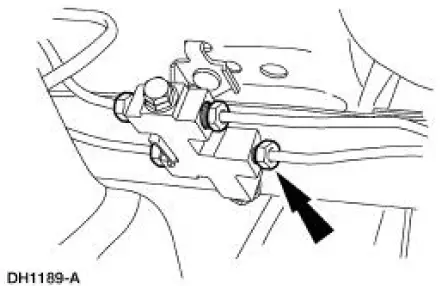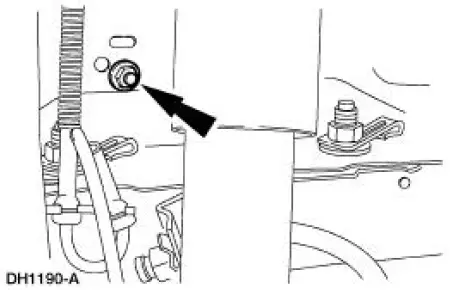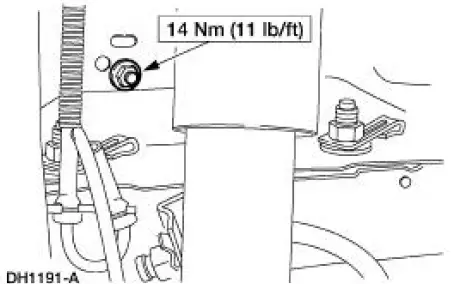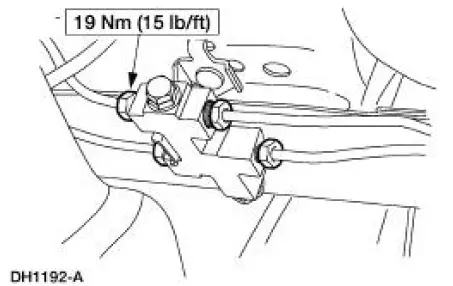Ford Mustang (1999-2004) Service Manual: Control Valve
Removal
1. Disconnect the brake tubes.

2. Remove the brake fluid control valve bracket nut.

Installation
1. To install, reverse the removal procedure.


 Reservoir
Reservoir
Removal
WARNING: Brake fluid contains polyglycol ethers and polyglycols.
Avoid contact with
eyes. Wash hands thoroughly after handling. If brake fluid contacts eyes,
flush eyes with
running wat ...
 Power Brake Actuation
Power Brake Actuation
Torque Specifications
...
Other materials:
Hydraulic System
Fluid Pump
The transmission uses a gerotor-type design front pump support and gear. The
pump provides the
volume of fluid needed to charge the torque converter, main control assembly,
cooling system and
lube system. Pump pressure is regu ...
Wheel Bearing Check
1. WARNING: The electrical power to the air suspension system must be
shut off prior
to hoisting, jacking or towing an air suspension vehicle. This can be
accomplished by
turning off the air suspension switch. Failure to do so can result in unexpected
infla ...
Throttle Body
Removal and Installation
WARNING: Do not smoke or carry lighted tobacco or open flame of any
type when
working on or near any fuel related components. Highly flammable mixtures are
always present
and can ignite. Failure to follow these instructions can resul ...
